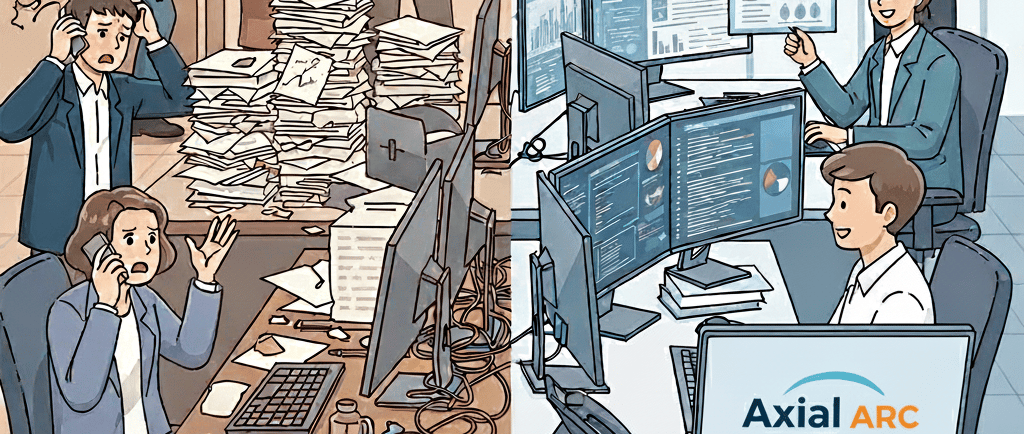From Reactive to Proactive: The Concierge IT Model Revolutionizing Helpdesk Services
Bryon Spahn
9/4/20253 min read


Tired of the endless loop of helpdesk tickets, frustrated employees, and a feeling that your IT team is constantly playing catch-up? For many IT leaders and CIOs, the traditional helpdesk model is a source of constant friction. A better way exists: the concierge IT service model. This approach transforms your helpdesk from a reactive cost center into a proactive, value-adding engine for your business.
The Problem with Traditional Helpdesks
In the traditional helpdesk model, a ticket is created and then bounced around from one team to another, often with little communication or ownership. This creates a disjointed, inefficient process where no single individual is truly accountable for the end-to-end resolution. It's frustrating for the person who submitted the request and creates a backlog of administrative work for your skilled engineers, who spend more time managing tickets than solving problems.
Introducing the Concierge IT Model
The core of the concierge model is the Incident Management Team. This team, composed of dedicated incident managers, takes ownership of a support ticket from the moment it's created until the issue is fully resolved and the requester is satisfied. These incident managers act as the single point of contact, providing personalized, high-touch support. They are directly accountable to the requester for the disposition of their support incidents, ensuring a level of transparency and accountability that's often missing in traditional models.
Benefits for Your Teams
Improved Employee Experience: By owning the process from start to finish, incident managers can provide proactive updates and a much more streamlined experience for your employees. No more "black hole" tickets where requests disappear without a trace.
A Natural Talent Pipeline: This model provides a unique opportunity for junior IT resources to "ride along" with experienced incident managers. By observing and assisting in the end-to-end resolution process, they gain invaluable hands-on experience and a deeper understanding of complex technical issues. This creates a natural, in-house pipeline of new talent, saving your organization time and money on recruitment and training.
Freed-Up Resources: When incident managers handle the administrative burden of ticket management, your downstream resources (like network engineers or database administrators) are freed up to focus on more critical, high-impact tasks. They can spend their time on strategic projects, system maintenance, and innovation rather than chasing ticket updates.
The Power of Incident Mapping
To effectively implement this model, you must first go through an incident mapping process. This is a crucial step in which you identify the defining characteristics of various incidents. By creating a detailed roadmap, incident managers can quickly identify the necessary downstream resources, understand the scope of the problem, and expedite the resolution process. This proactive approach eliminates guesswork and ensures that every incident is handled with a clear, predefined strategy.
The Strategic Advantage for Leaders
For CIOs and IT leaders, implementing the concierge IT model offers significant strategic advantages:
Increased Accountability: With incident managers owning the entire process, accountability is built into the system. You can easily track performance, identify bottlenecks, and measure success based on real-world outcomes.
Enhanced Visibility: The model provides clear visibility into the entire incident lifecycle, allowing you to identify trends, pinpoint recurring issues, and make data-driven decisions to improve your IT infrastructure.
Reduced Costs: By improving efficiency, creating an internal talent pipeline, and reducing administrative overhead, the concierge model ultimately lowers your operational costs and increases the return on your IT investment.
Partnering with Axial ARC
The journey to a concierge IT model can seem daunting, but you don't have to go it alone. Axial ARC specializes in helping organizations make this transformative shift. We partner with you to:
Conduct Incident Mapping: Our experts will work with your teams to perform a thorough incident mapping process, creating the detailed roadmaps your incident managers need.
Establish the Incident Management Team: We assist in structuring and training your new Incident Management Team, ensuring they have the skills and processes in place to succeed.
Implement a New Framework: We provide the expertise and guidance to seamlessly transition your organization from a traditional helpdesk to a more efficient, proactive concierge model.
Ready to move beyond the helpdesk and create a truly responsive, accountable, and strategic IT organization? Let's talk about how Axial ARC can help you make it happen.
